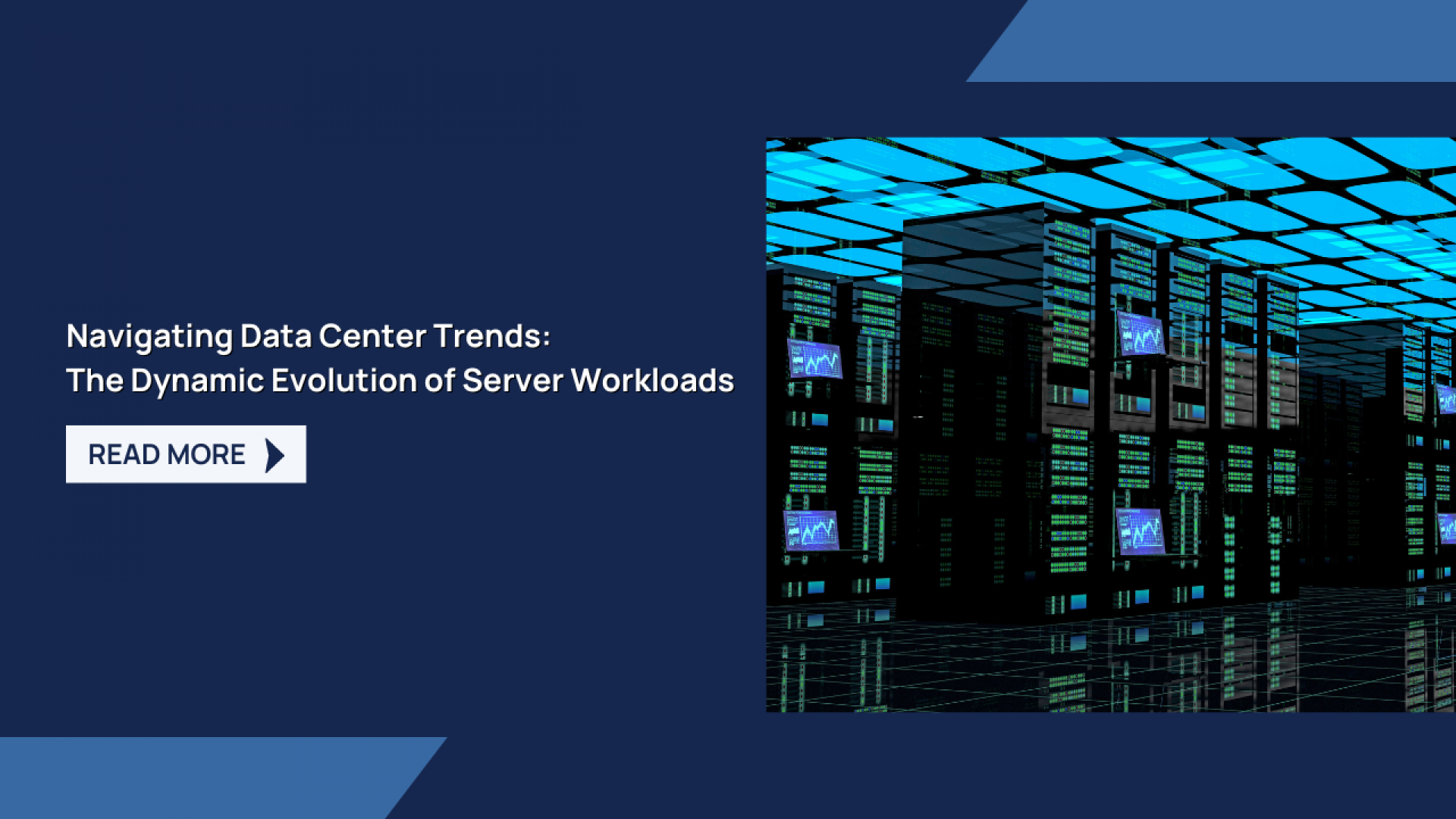
In the fast-paced domain of data management, the function of servers within data centers is in constant flux to address the requirements of dynamic workloads. As businesses delve deeper into data-driven operations, servers face escalating pressure to swiftly and effectively adapt. This blog delves into the latest trends reshaping data center server technology and explores how servers are morphing to accommodate the ever-changing landscape. From scalability and flexibility to specialized hardware integration and heightened security measures, understanding these developments is crucial for staying ahead in the evolving world of data management. Join us as we navigate the intricate realm of data center trends and uncover the strategies driving innovation in server technology.
Introduction: Unveiling Data Center Trends
In the fast-paced domain of data management, the function of servers within data centers is in constant flux to address the requirements of dynamic workloads. As businesses delve deeper into data-driven operations, servers face escalating pressure to swiftly and effectively adapt. This blog delves into the latest trends reshaping data center server technology and explores how servers are morphing to accommodate the ever-changing landscape. From scalability and flexibility to specialized hardware integration and heightened security measures, understanding these developments is crucial for staying ahead in the evolving world of data management. Join us as we navigate the intricate realm of data center trends and uncover the strategies driving innovation in server technology. Comprint has a high end collection of servers that are well suited for all scales of data centers.
In light of growing demand, data center operators actively pursue innovative solutions to improve performance, enhance efficiency, and cut operational costs. Servers, positioned at the heart of these initiatives, serve as the essential components of data centers. They are pivotal in driving advancements aimed at meeting the evolving needs of modern data management. As the demand for data processing and storage continues to rise, the role of servers becomes increasingly critical in ensuring the seamless operation and optimization of data center infrastructure. Thus, understanding the pivotal role servers play in data center operations is paramount for achieving efficiency and staying competitive in the ever-evolving landscape of technology.
The Journey of Server Technology
Over time, server technology has undergone remarkable transformations to align with shifting workloads and technological breakthroughs. Traditional server architectures rooted in physical hardware have given way to virtualization, containerization, and cloud-native methodologies.
Virtualization enables multiple virtual machines to operate on a single physical server, fostering superior resource utilization and flexibility. Containerization further refines efficiency by encapsulating applications and their dependencies into lightweight, portable containers. Cloud-native architectures leverage microservices and serverless computing to deliver scalable, resilient applications capable of adapting to dynamic workloads in real-time.
Embracing Scalability and Flexibility
A prominent trend in server technology is the pursuit of scalability and flexibility. Contemporary servers are meticulously engineered to scale both horizontally and vertically, enabling data centers to accommodate burgeoning workloads seamlessly.
Horizontal scalability entails augmenting server clusters or pools with additional nodes to distribute workload and amplify capacity. This approach fortifies redundancy and fault tolerance, ensuring unparalleled availability and reliability. Vertical scalability, conversely, involves enhancing existing servers with beefier hardware components such as CPUs, memory, and storage.
Harnessing Specialized Hardware Accelerators
To cater to the performance prerequisites of nascent workloads like artificial intelligence (AI), machine learning (ML), and data analytics, servers are increasingly integrating specialized hardware accelerators. Graphics Processing Units (GPUs), Field-Programmable Gate Arrays (FPGAs), and Application-Specific Integrated Circuits (ASICs) are being harnessed to offload compute-intensive tasks from CPUs and expedite processing.
These hardware accelerators excel in parallel processing and are especially adept at tasks such as deep learning, image recognition, and natural language processing. By leveraging specialized accelerators, data centers attain significant performance boosts and trim down time-to-insight for data-intensive applications.
Pioneering Energy Efficiency and Sustainability
As energy consumption and environmental ramifications gain prominence in data center discourse, server manufacturers are pivoting towards energy efficiency and sustainability in their designs. Novel server architectures and cooling technologies are being conceived to curtail power consumption and mitigate carbon footprint.
Cutting-edge cooling methodologies such as liquid cooling and immersion cooling are gaining traction as more efficient alternatives to traditional air-based cooling systems. Furthermore, server components are being fine-tuned for energy efficiency, with low-power CPUs, solid-state drives (SSDs), and power management features becoming de rigueur in contemporary servers.
Prioritizing Security and Data Integrity
In the face of mounting cyber threats and data breaches, server security emerges as a paramount concern for data center operators. Servers are fortified with robust security features such as hardware-based encryption, secure boot, and firmware integrity checks to thwart unauthorized access and malicious attacks.
Moreover, data integrity measures such as RAID (Redundant Array of Independent Disks) and backup solutions are implemented to shield against data loss and uphold business continuity. Adhering to data privacy regulations such as GDPR (General Data Protection Regulation) and HIPAA (Health Insurance Portability and Accountability Act) is also deemed essential for server deployments.
Conclusion: The Trajectory of Server Technology
In summation, the evolution of server technology is propelled by the imperative to adapt to evolving workloads, heighten performance, and augment efficiency. Data center trends such as scalability, flexibility, specialized hardware accelerators, energy efficiency, and security are steering the trajectory of server technology.
As businesses continue to embrace digital transformation and harness the potency of data, servers will assume an increasingly pivotal role in underpinning mission-critical applications and services. By staying abreast of the latest trends and innovations in server technology, data center operators can ensure that their infrastructure remains resilient, agile, and poised to meet the exigencies of the digital era.

Leave a Comment